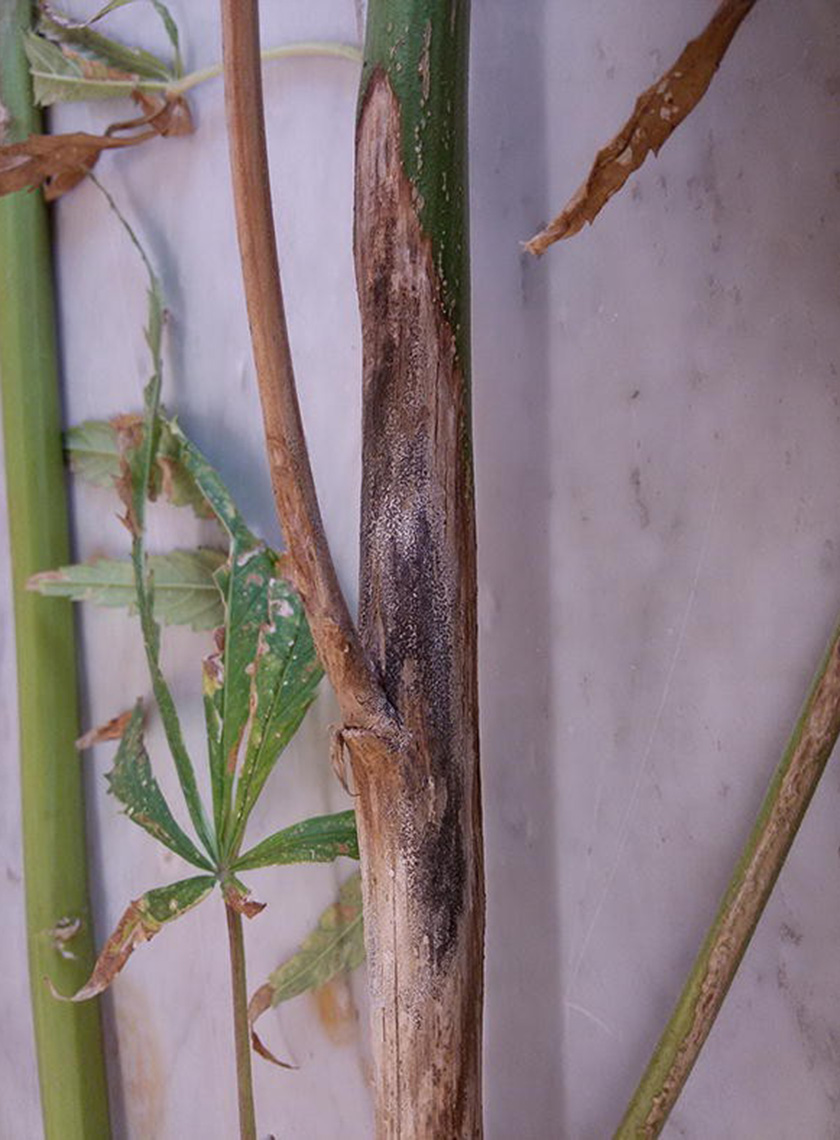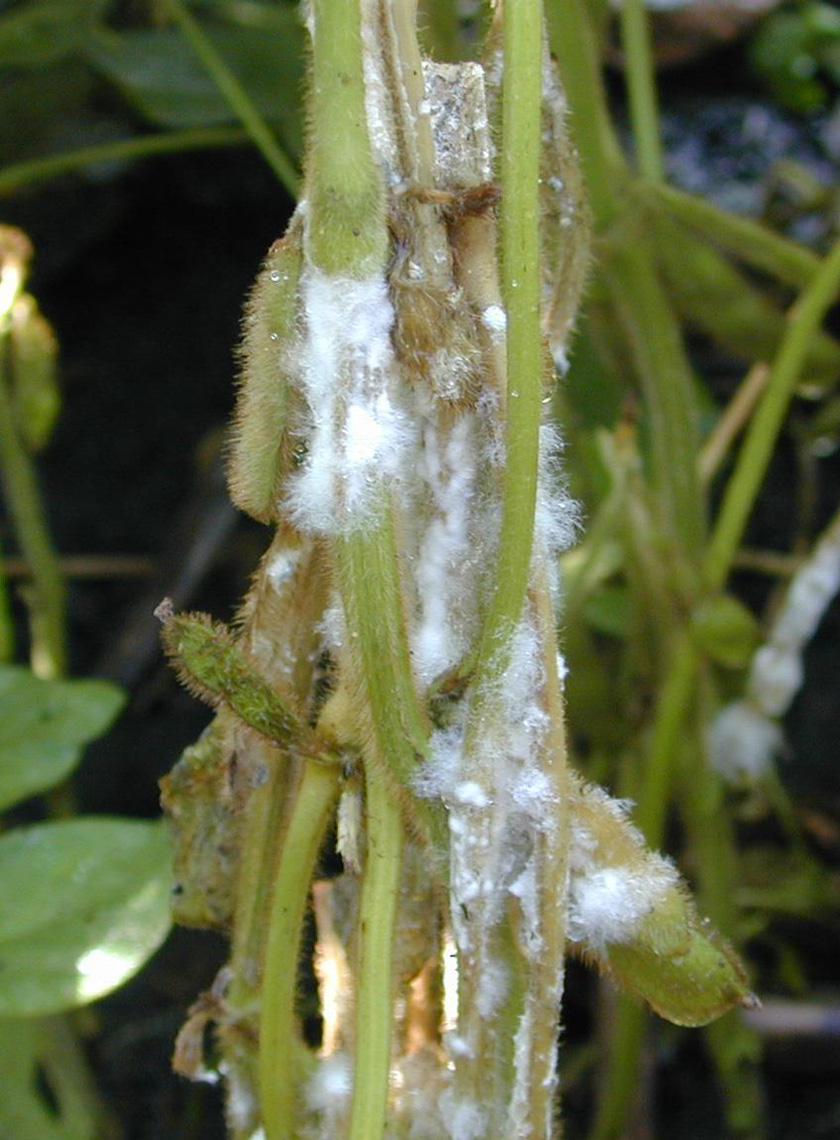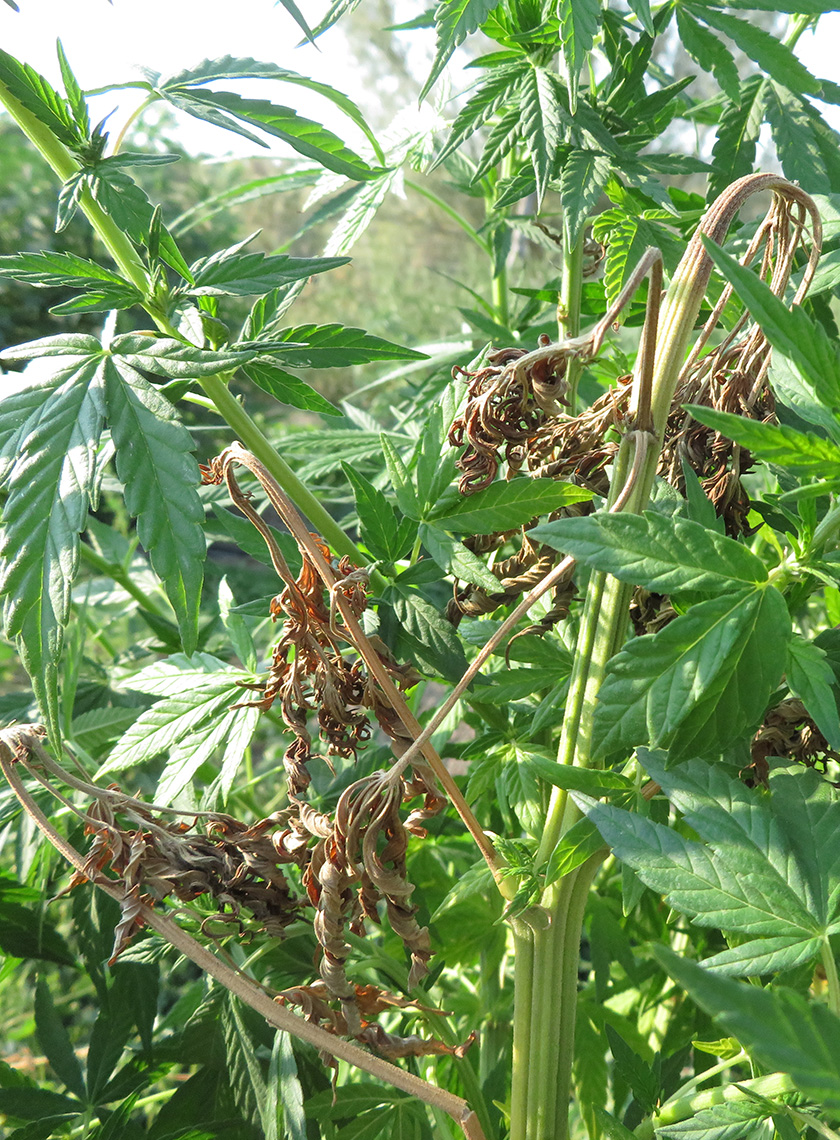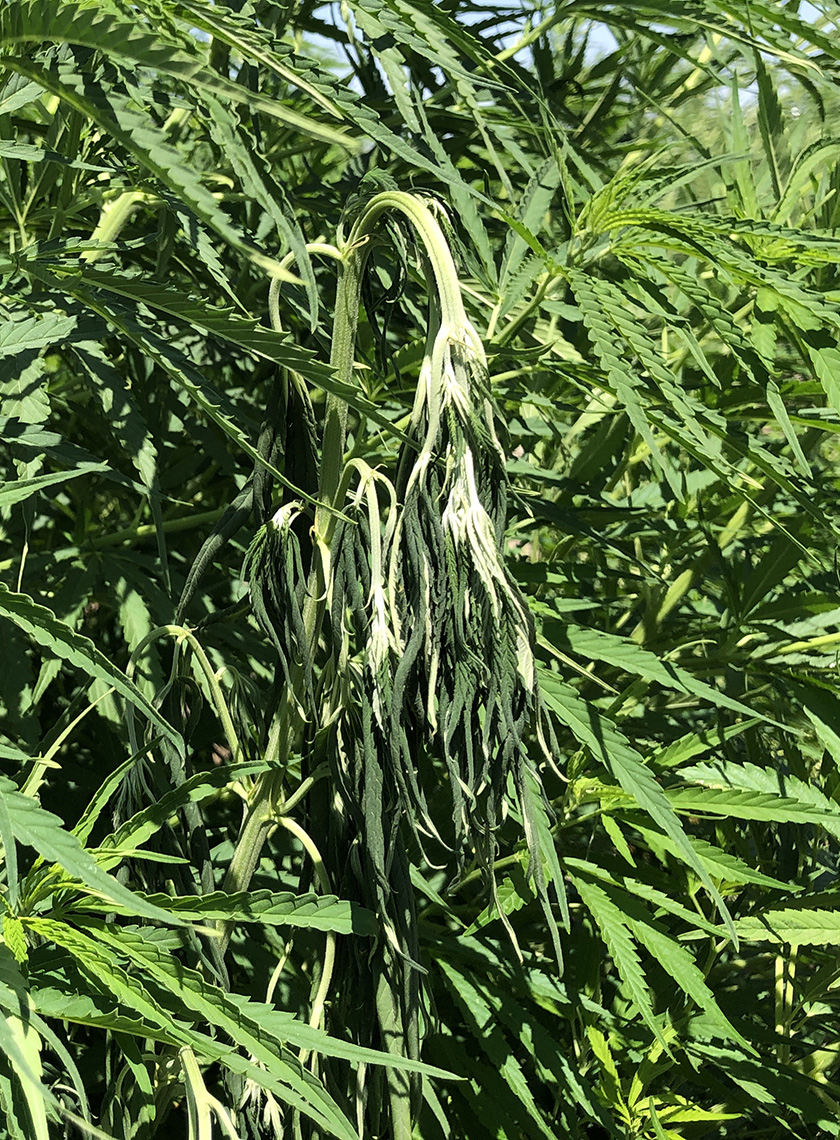Stem Cankers
Several fungal species, including Alternaria spp., Neofusiccocum spp., Lasiodiplodia spp., Phomopsis spp., and Sclerotinia sclerotiorum
Hosts
- Field-grown hemp (fiber seems more affected)
- Variety of vegetables
Symptoms
Stem cankers occur on the main stem or side stems as small, light-to-dark brown lesions of different sizes and shapes. Over time, the lesions enlarge and encircle the stem, killing the epidermis and underlying tissue. All plant parts above the cankered area wilt and then die. Cankers caused by Sclerotinia will be associated with profuse, fuzzy, white mycelium and black fruiting bodies (sclerotia) on the affected plant part.
Disease Cycle
Fungi that cause cankers may overwinter in infected crop debris or as survival structures (sclerotia) in the soil. Sclerotia can survive for 5 to 8 years. Once temperatures rise above 60°F and soil moisture is present, the fruiting bodies release spores that are either wind-blown or water-splashed to host tissue. These spores can invade any healthy part of the plant it comes in contact with. Moist conditions in the plant canopy favor infection.
Time for Concern
Later in the season as stems become thicker.
When and Where to Scout
- Check plants for wilting shoots or stems starting in mid-summer.
- If the rest of the plant is healthy, inspect the stem carefully for signs or symptoms of a canker.
- Use a knife to scrape away the epidermis along the stem to determine if the tissue underneath is brown.
Threat Level
Very low. Sclerotinia sclerotiorum does occur in Utah rarely on other crops, and has been found on hemp in Oregon. It is considered a damaging disease of hemp central and eastern North America.
Occurrence in Utah
No stem cankers have been positively identified in Utah.
Management
- Avoid planting hemp in fields where stem cankers have occurred in the past on other crops.
- Minimize leaf wetness from irrigation and ensure good air circulation.
- Prune out infected plant portions as they are found.
- If Sclerotinia has been identified, rotate hemp with non-host crops (grasses, cereals, or onion) for 2 to 8 years to reduce inoculum in the field.
When to Consider Treatment
Treatment not needed except to prune out affected stem.
Look-alikes
Some branches on hemp can spontaneously break at the junction with the stem, but remain attached.
Photo Credits
- Ilaria Alberti, Council for Agricultural Research and Agricultural Economy Analysis
- Daren Mueller, Iowa State University, Bugwood.org
- USU Extension IPM Program





